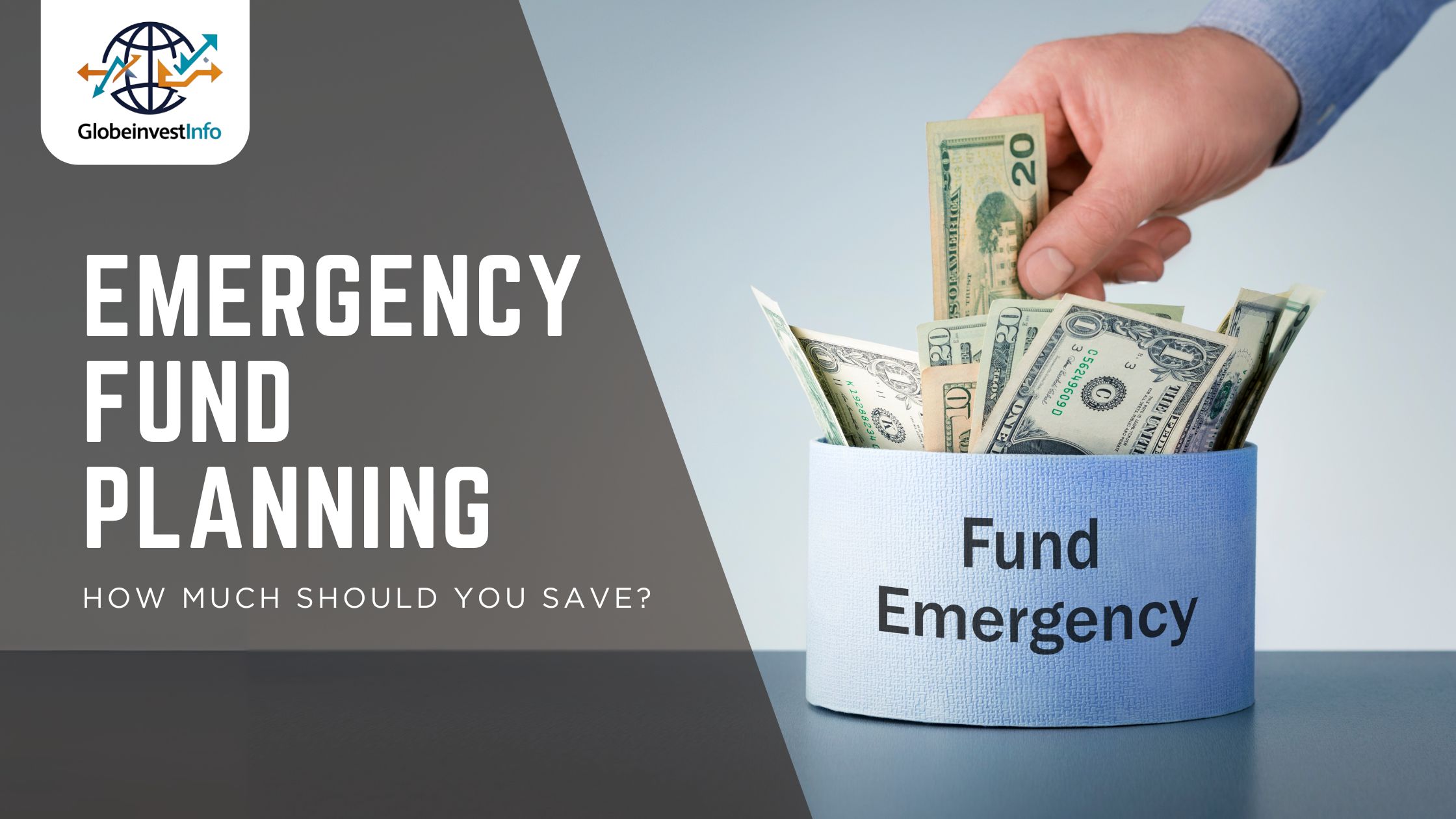Life can be unpredictable. Job loss, medical bills, or unexpected repairs can happen without warning. Without a safety net, these situations can turn into debt or financial stress. That’s where emergency fund planning comes in.
An emergency fund is money set aside specifically for unplanned expenses. But how much should you save? The answer depends on your income, lifestyle, and financial responsibilities. In this guide, we’ll explain the rules of thumb, factors to consider, and steps to build an emergency fund that keeps you financially secure.
Why You Need an Emergency Fund
An emergency fund acts as your financial cushion. It keeps you from relying on credit cards or loans when unexpected expenses appear.
Key reasons to build an emergency fund:
- Protects against job loss or reduced income
- Covers medical expenses or emergencies
- Helps with sudden car or home repairs
- Reduces stress during uncertain times
Without emergency savings, even a small surprise bill can disrupt your budget. With one, you gain peace of mind knowing you’re prepared.
How Much Should You Save in an Emergency Fund?
Most experts recommend saving three to six months of living expenses. This means covering rent, food, bills, insurance, and transportation costs — not luxuries.
- Minimum Goal: 3 months of expenses (for single students or those with fewer responsibilities).
- Standard Goal: 6 months of expenses (for families, homeowners, or anyone with dependents).
- Extended Goal: 9–12 months (for freelancers or people in unstable industries).
Example:
If your monthly expenses are $2,000, your emergency fund target should be:
- Minimum: $6,000
- Standard: $12,000
- Extended: $18,000–$24,000
Factors That Influence Your Emergency Fund Size
Not everyone needs the same amount saved. Your personal situation will determine the right goal.
Key factors include:
- Job stability: Stable salaried job = 3 months may be enough. Freelance or contract work = aim for 6–12 months.
- Dependents: If you support family, save more.
- Health coverage: Strong insurance reduces risk, but out-of-pocket costs still exist.
- Debt load: If you have high-interest debt, balance between repayment and saving.
- Lifestyle: Higher monthly expenses require a larger fund.
Steps to Build Your Emergency Fund
Building an emergency fund may feel challenging, but breaking it into steps makes it easier.
1. Set a target amount
Decide whether your goal is 3, 6, or 12 months of expenses. Write down the exact figure.
2. Start small
Begin with $500–$1,000 as a starter fund. Even a small cushion prevents panic during minor emergencies.
3. Save consistently
Automate monthly transfers into a savings account, even if it’s just $50–$100. Small contributions add up.
4. Use windfalls wisely
Tax refunds, bonuses, or gifts can speed up your savings progress. Direct part of these into your fund.
5. Keep expenses in check
Track spending and redirect unnecessary costs (like subscriptions you don’t use) toward savings.
Where to Keep Your Emergency Fund
Your emergency fund should be safe, accessible, and separate from everyday spending.
Best places to store emergency savings:
- High-Yield Savings Account (HYSA): Earns interest while keeping money accessible.
- Money Market Account: Slightly higher returns, but still liquid.
- Short-Term Certificate of Deposit (CD): For part of the fund you won’t need immediately.
Avoid keeping emergency funds in:
- Stocks or volatile investments (too risky)
- Regular checking accounts (too tempting to spend)
The goal is liquidity and safety, not high returns.
Common Mistakes in Emergency Fund Planning
Many people struggle to build or maintain their fund because of these common errors:
- Treating it like investment money — An emergency fund is for safety, not growth.
- Mixing it with daily spending — Keep it in a separate account.
- Underestimating expenses — Always calculate based on essentials like rent, food, and bills.
- Stopping once you reach $1,000 — A starter fund helps, but aim for months of coverage.
- Using it for non-emergencies — Vacations, shopping, or luxury items don’t qualify.
Frequently Asked Questions
1. What is the emergency fund rule of thumb?
Most financial planners suggest 3–6 months of living expenses.
2. Can students or low-income earners build an emergency fund?
Yes. Start small with $500–$1,000 and grow steadily over time.
3. Should I build an emergency fund before paying debt?
Yes, build at least a starter fund. Then balance between debt repayment and saving.
4. Is $1,000 enough for an emergency fund?
It’s a good start, but aim for months of expenses for true security.
5. Where should I keep my emergency savings?
In a high-yield savings account or money market account for easy access.
6. How do I calculate my emergency fund target?
Add up your essential monthly expenses and multiply by 3–6.
7. Can I invest my emergency fund?
No, it should remain liquid and risk-free.
8. What qualifies as an emergency?
Job loss, medical bills, urgent repairs — not planned expenses or luxuries.
9. How long will it take to build an emergency fund?
Depends on income. For most, reaching 3 months takes 1–3 years with steady contributions.
10. Should couples share one emergency fund?
Yes, but base the target on combined household expenses.
Conclusion
An emergency fund is the foundation of financial stability. It ensures you can handle life’s surprises without going into debt or sacrificing your long-term goals.
Start small if you need to, but stay consistent until you reach at least 3–6 months of expenses. Remember: emergency fund planning is less about speed and more about discipline.
For more guides on financial planning, saving strategies, and investing, visit Globe Invest Info — your trusted source for smart money tips in 2025.

David Rooy is a finance writer and market analyst specializing in business, investing, and market news. He delivers clear, actionable insights to help readers stay informed and make smarter financial decisions.

